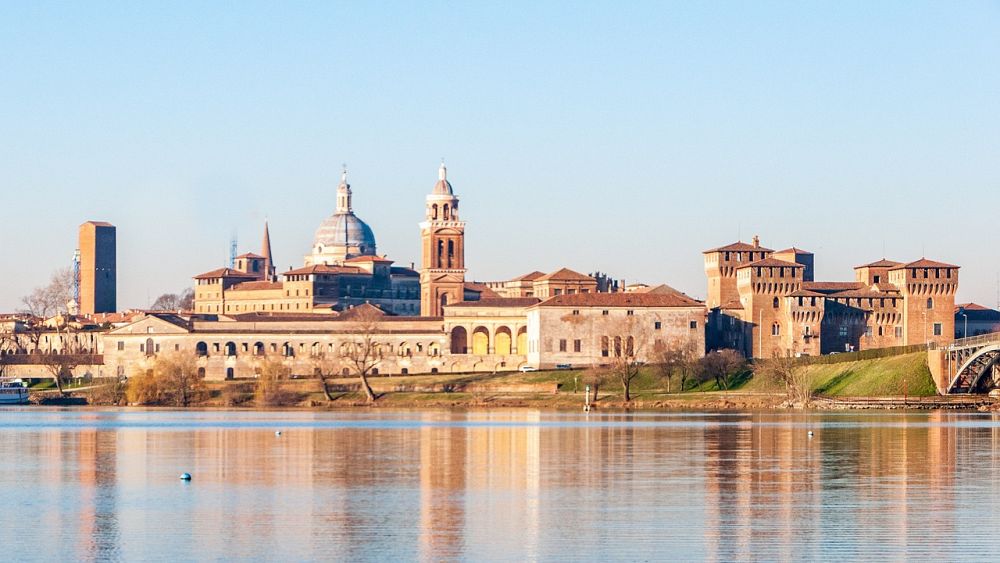Fancy getting paid to live in one of Italy’s great art cities?
Mantua, in the northern Italian region of Lombardy, is luring new residents with cash incentives.
The city is renowned for its splendid Renaissance palaces and excellent food.
Here’s everything you need to know about applying for the grants.
Get paid to move to Mantua, Italy
The city of Mantua is taking its cues from several other communities in Italy and enticing new residents with cash handouts.
Authorities hope the scheme will help mitigate the problems of having an ageing population.
“If we add the ageing of the population to the data on the falling birth rate, in most Italian cities in the next few years there will be more people who are not working than those who are working,” says Mantua mayor Mattia Palazzi.
“We need to increase the resident population for the next few years, increasing the number of people who work and produce income to allow the municipality to handle public welfare spending.”
The town council has a total of €400,000 for the initiative, €200,000 of which will be distributed this year and €200,000 more in 2024.
The money will be used to provide rent contributions for those who take up residence in the city. New inhabitants will receive €150 a month towards their rent.
Authorities have said they will accept around 100 applications a year for the grants.
In order to be eligible for the financial assistance, those interested must sign a rental contract for at least a year.
The scheme is open to both families and individuals. It is aimed at professionals with salaries of around €1,200-€1,500 per month - although an income threshold has not yet been officially announced.
The council sees this as both a boost for the city and a valuable opportunity for new residents.
"There will be many new job offers in the next two years," says Mayor Palazzi. “There are several companies that are investing and are establishing themselves in Mantua, particularly in the logistics sector.”
The mayor added that lots of big companies are looking to hire young people. For families, Palazzi emphasises new investments in school and municipal nursery schools that are available free of charge.
Applications for the scheme will be available towards the end of summer.
Get paid to live in an art city in Italy
While most of the other cash schemes for new residents in Italy have been offered by remote villages, Mantua’s appeal is quite different.
The city of around 50,000 inhabitants is renowned for its monumental noble residences.
The centre of the city is dominated by the Palazzo Ducale, a fortress-palace built by the ruling Gonzaga family between the 14th and 17th centuries.
It is the sixth largest palace in Europe with more than 500 rooms, seven gardens and eight courtyards.
Amongst its innumerable attractions is the Camera degli Sposi (Wedding Room), often dubbed the most beautiful room in the world.
The chamber is decorated with illusionistic frescoes by Andrea Mantegna of lush gardens, court scenes and a ceiling with an oculus open to a painted sky.
On the other side of the city is another display of Gonzaga wealth. The Palazzo Te is an extravaganza of playful mannerist architecture by Giulio Romano.
Most visitors make a beeline for the artist’s illusionistic frescoes decorating the Sala dei Giganti. The walls and ceiling are painted to become one spectacular scene of furious giants wreaking havoc and destruction.
Mantua, European Capital of Gastronomy
In 2017, the city was declared the European Capital of Gastronomy. Many of Mantua’s most traditional dishes date back to the Gonzaga’s rule.
One of the most famous plates is tortelli di zucca, a pasta stuffed with pumpkin, parmesan cheese, nutmeg and amaretti biscuits.
Another popular pasta dish is bigoli con le sardelle, a fat spaghetti with an onion, garlic and sardine sauce.
For something sweet, look out for torta elvezia, a dessert invented in the 18th century to honour visiting Swiss chefs. It is made with three circular layers of egg white, sugar and almond paste filled with chocolate or custard.


